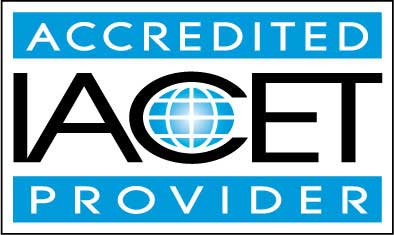Course Description
The Financial Freedom Journey
Embark on an imaginative journey towards mastering personal finance with our innovative course designed to transform your financial future. Picture this: you’re planning an exhilarating adventure to your dream destination. It starts with a vision—a dream of white sandy beaches and tranquil seas or perhaps the thrill of navigating through bustling city streets in a foreign land. This course uses the metaphor of planning a dream trip to illustrate the pathway to financial independence.
The process begins in your mind's eye, where dreaming and believing shape the contours of your financial landscape. Yet, dreams alone aren’t enough. Like any substantial journey, achieving financial freedom requires concrete steps—planning, execution, and eventually, the joy of experiencing your dreams come to life.
Throughout this course, your financial plan will unfold like a well-crafted travel itinerary. You'll start by plotting the course in the 'Plan' phase, where you’ll learn to manage your accounts, assess your financial health, and lay a strong foundation. This stage is about understanding where you stand today and setting the right course for tomorrow.
Moving into the 'Execute' phase, you'll tackle managing debts, building a robust credit score, and balancing your accounts to secure your financial future. This phase is akin to packing your bags and setting out on your journey, equipped with everything you need for success.
Finally, the 'Travel' phase allows you to reap the rewards of your hard work. Here, you'll learn how to grow your wealth, make smart investments, and possibly even start planning for retirement. It’s about enjoying the fruits of your labor, whether that’s on a beach in Oahu or enjoying the peace of mind that comes with financial security.
Why focus on personal finance? Imagine you're driving cross-country from New York to Los Angeles. Without a map, weather updates, or hotel bookings, your journey could be risky and fraught with uncertainty. Similarly, navigating your financial landscape without a plan can lead to missed opportunities and potential pitfalls. This course serves as your map, meteorologist, and travel agent, guiding you through the complexities of financial management.
As we delve into the nuances of personal finance, you'll discover that managing your money is not just about numbers; it’s about setting a course that aligns with your personal goals and dreams. Whether you’re just starting out or looking to refine your financial strategy, this course offers valuable insights and tools to help you manage, sustain, and grow your wealth effectively.
By the end of this course, you won't just be planning for financial success—you'll be living it.
- Completely Online
- Self-Paced
- Printable Lessons
- Full HD Video

- 6 Months to Complete
- 24/7 Availability
- Start Anytime
- PC & Mac Compatible
- Android & iOS Friendly
- Accredited CEUs

Learning Outcomes
- Define the significance of establishing an emergency fund in achieving financial security and preparedness.
- Demonstrate the process of creating a personal budget by categorizing monthly expenditures and identifying areas for potential savings.
- Demonstrate the ability to track and analyze cash flow patterns over a two-week period for improved financial management and planning.
- Recognize and categorize personal financial assets and liabilities to accurately calculate net worth using real-life financial scenarios.
- Define and differentiate between liquid and non-liquid assets by providing three distinct characteristics of each asset type.
- Develop a personal cash flow chart to identify one specific financial scenario: negative, zero, or positive cash flow, and propose two actions to address or optimize this financial condition.
- Define the role of checking accounts in modern banking by identifying their primary features and functions, including transactional methods and fees.
- Demonstrate the process of reconciling a checking account by accurately comparing personal transaction records with bank statements to identify discrepancies and prevent errors.
- Define the importance of liquid assets and their role in securing financial stability during economic fluctuations.
- Demonstrate the ability to strategically allocate savings in various financial accounts to maximize returns and ensure FDIC coverage.
- Define key financial terms, such as Social Security and pension, and explain their roles in personal income generation strategies.
- Identify and apply three actionable methods to augment personal income, such as sharing living space or monetizing hobbies, by utilizing real-world examples.
- Define key financial priorities by categorizing monthly expenses into essential (e.g., housing, utilities) and non-essential (e.g., entertainment), ensuring a sustainable budgeting approach.
- Demonstrate mastery of lesson content at levels of 70% or higher.
Assessment Guide
| Assessment | Points |
|---|---|
| An Introduction | 1 points |
| Lesson 1: Introduction | 9 points |
| Lesson 2 Activity | 1 points |
| Lesson 2: Assets | 10 points |
| Lesson 3 Activity | 1 points |
| Lesson 3: Liquid and Non-Liquid Assets | 10 points |
| Lesson 4 Activity | 1 points |
| Lesson 4: Checking | 9 points |
| Lesson 5 Activity | 1 points |
| Lesson 5: Savings Savvy | 10 points |
| Exam 6 | 10 points |
| Lesson 7: Debt | 10 points |
| Lesson 8: Credit Cards | 9 points |
| Lesson 9 Activity | 1 points |
| Lesson 9: Investments | 9 points |
| Lesson 10: Loans | 10 points |
| Lesson 11 Activity | 1 points |
| Lesson 11: Conclusion | 6 points |
| Final Exam | 50 points |


